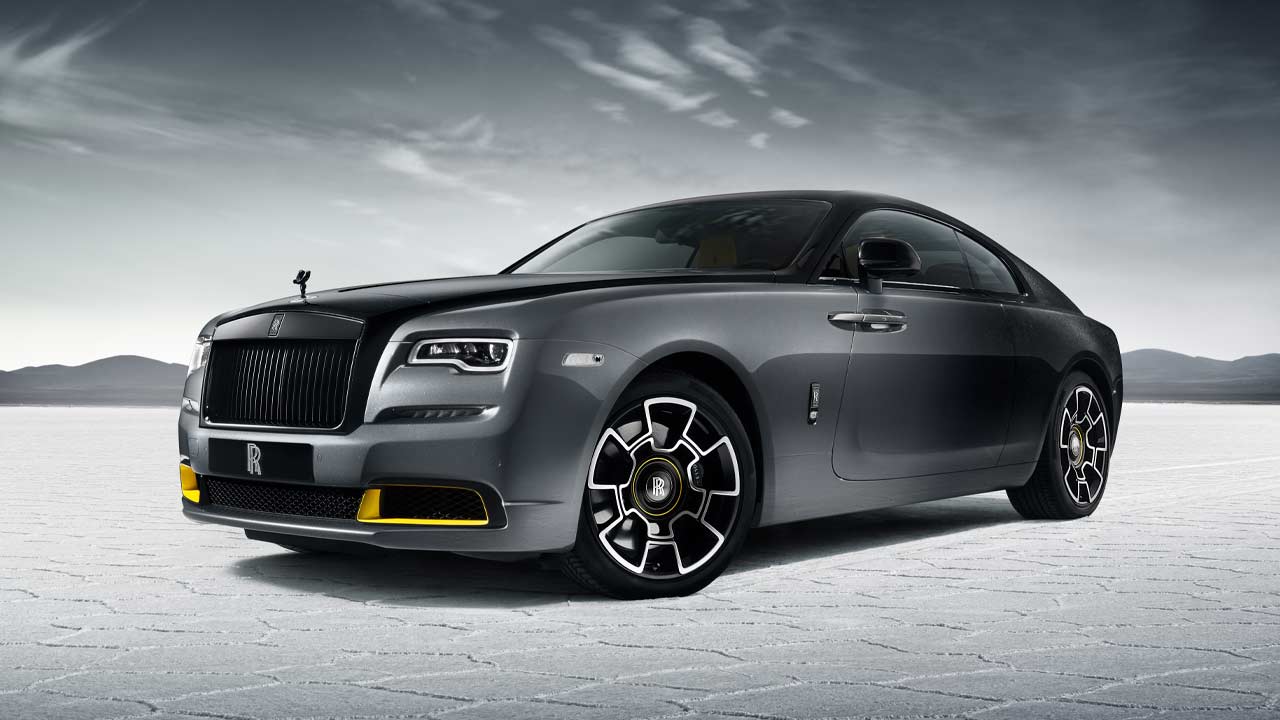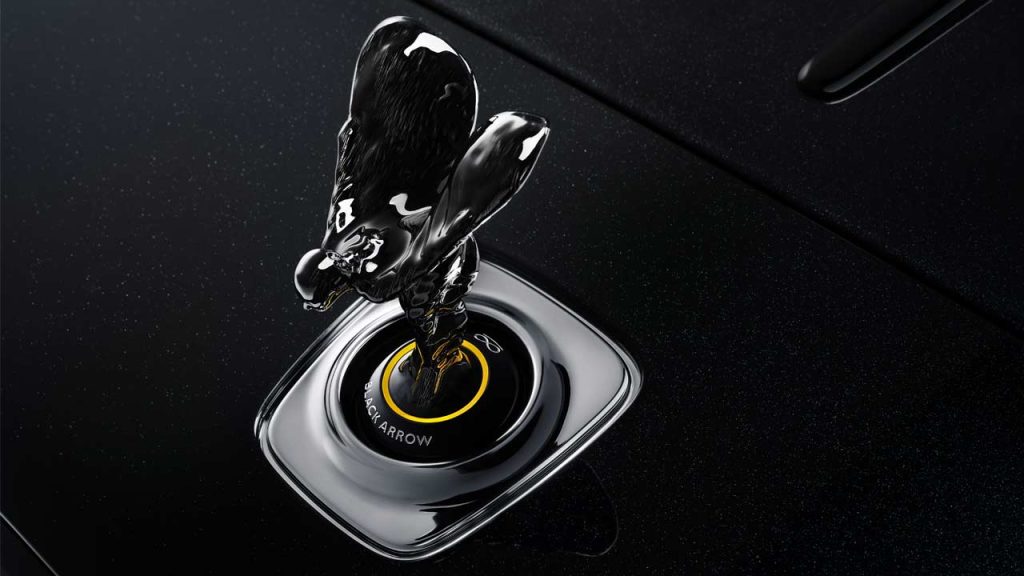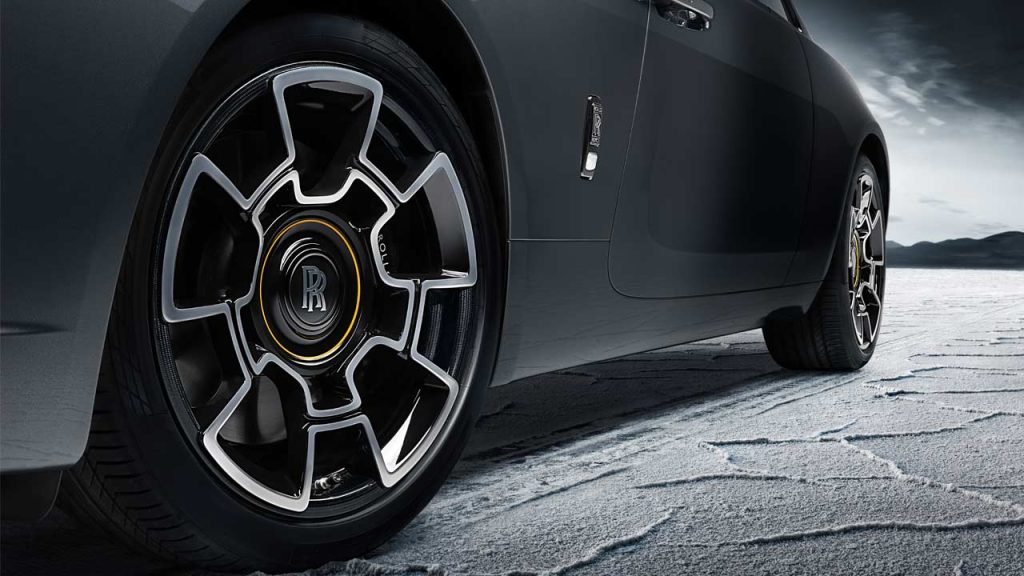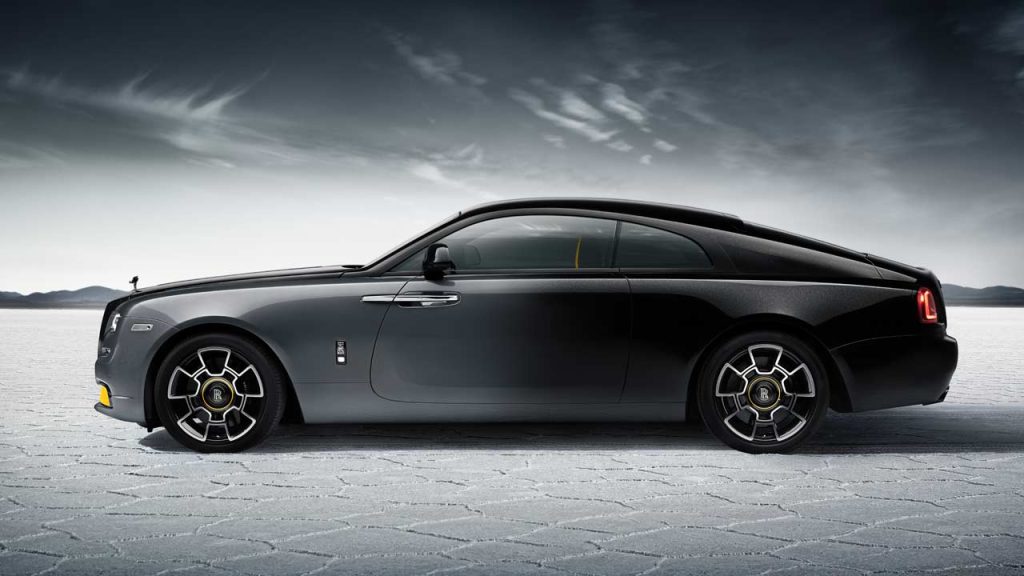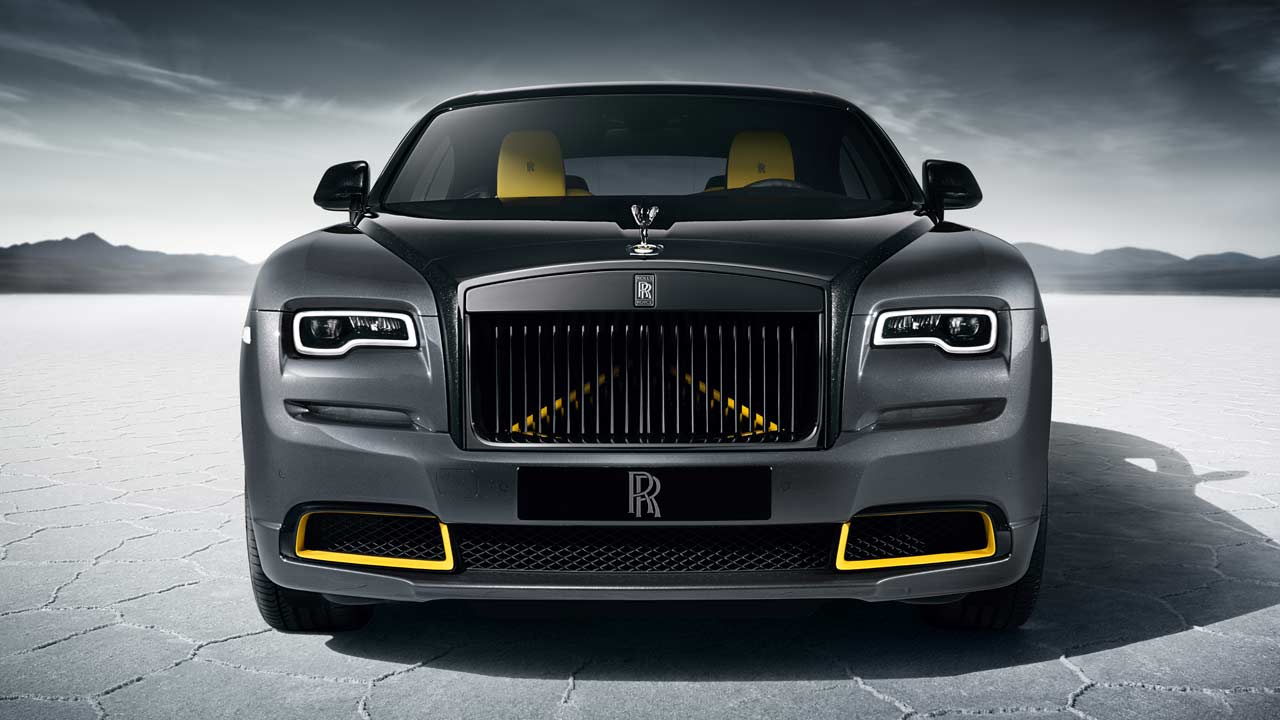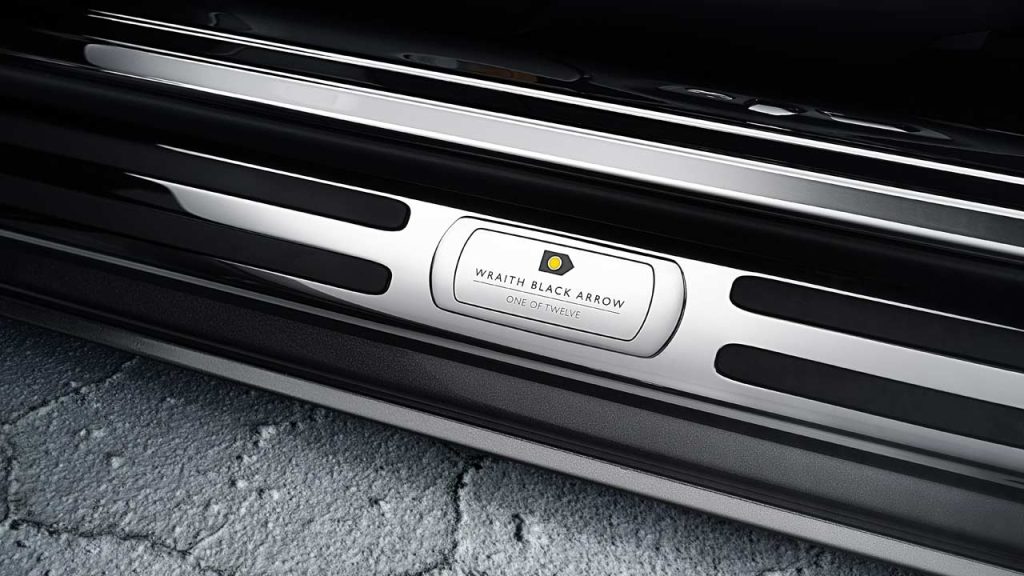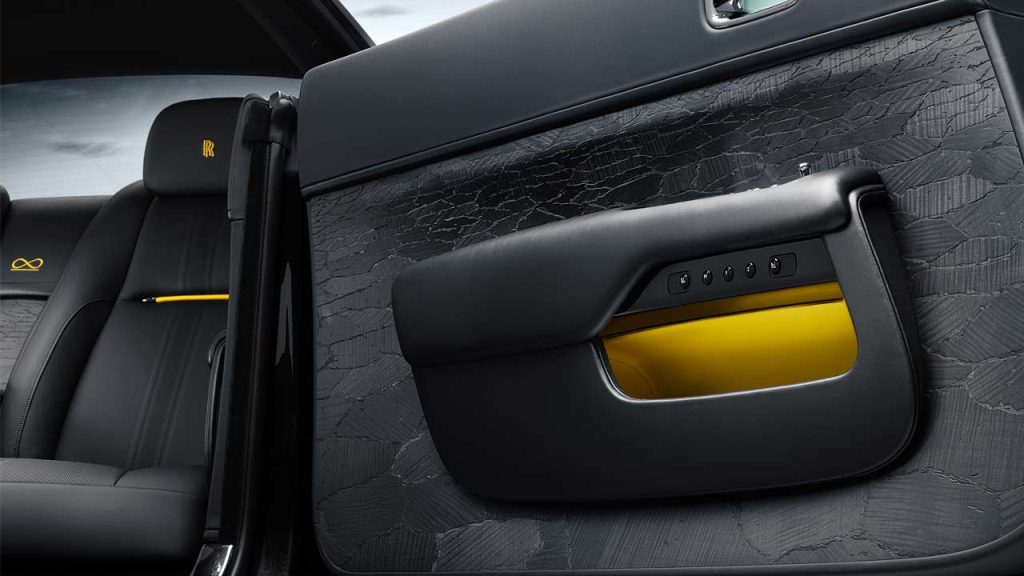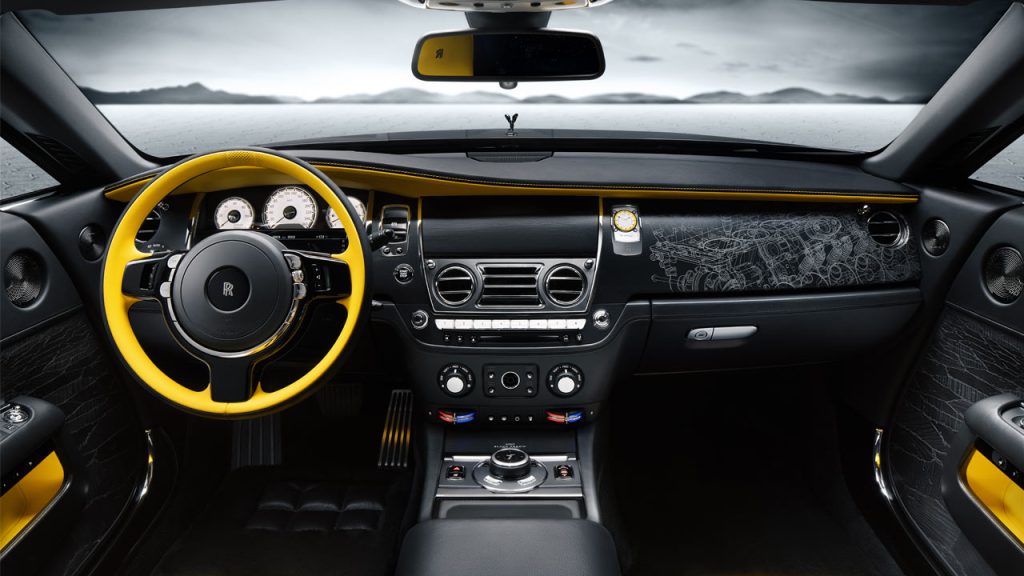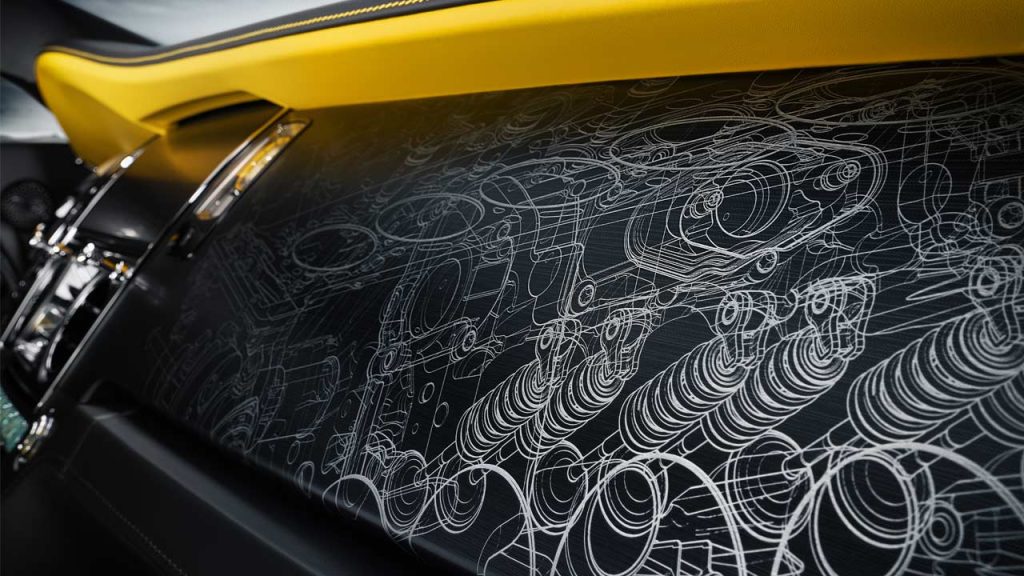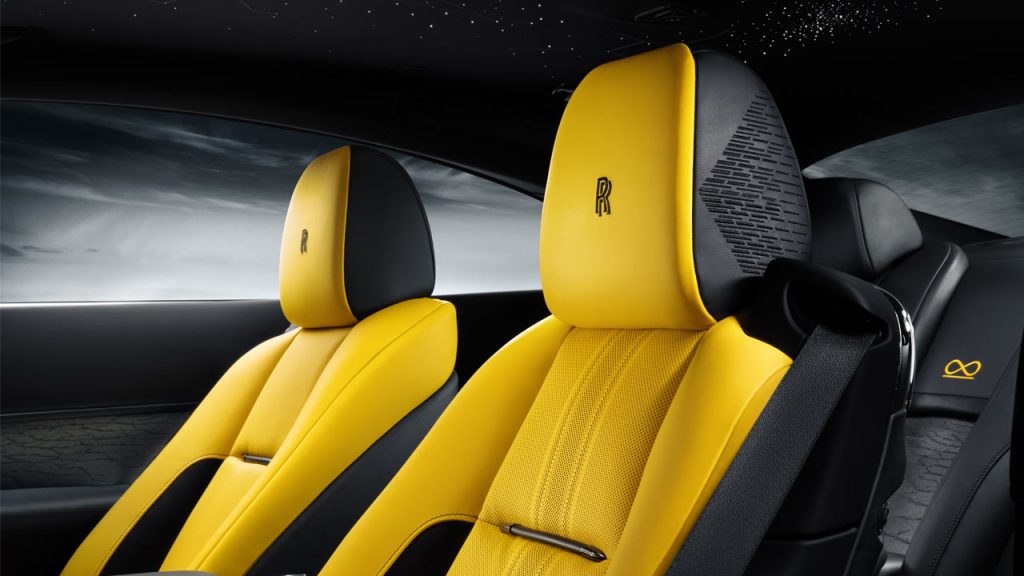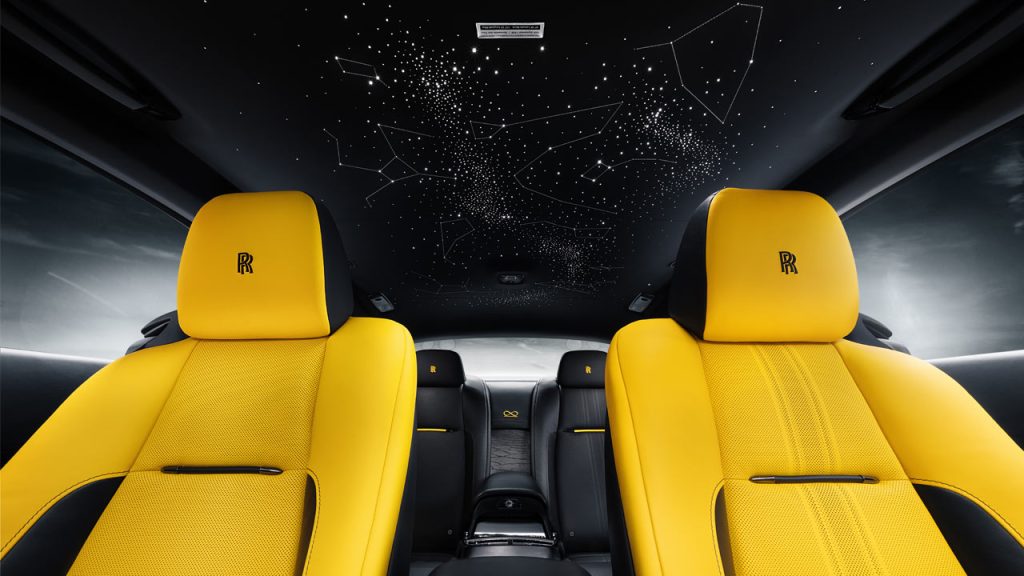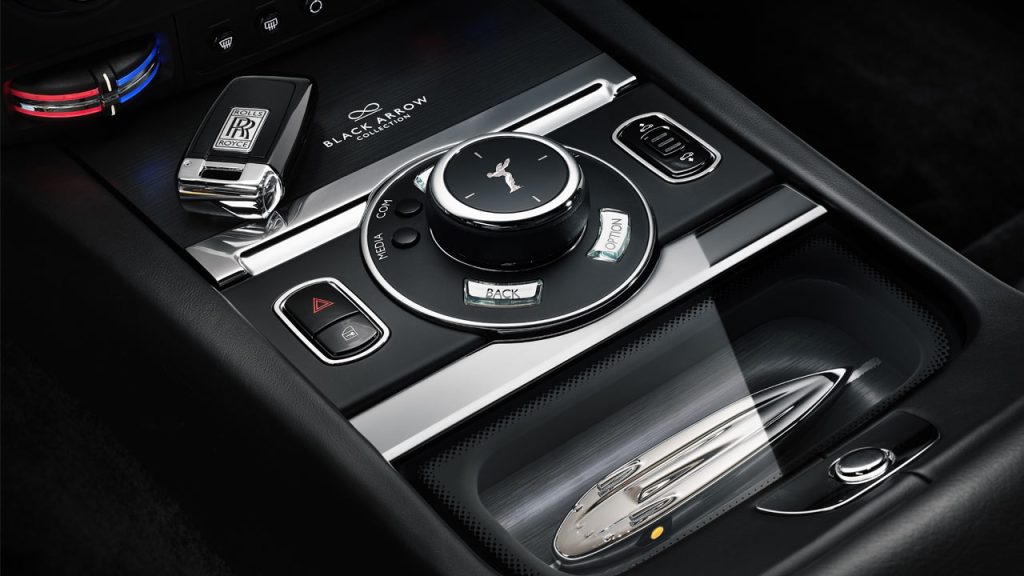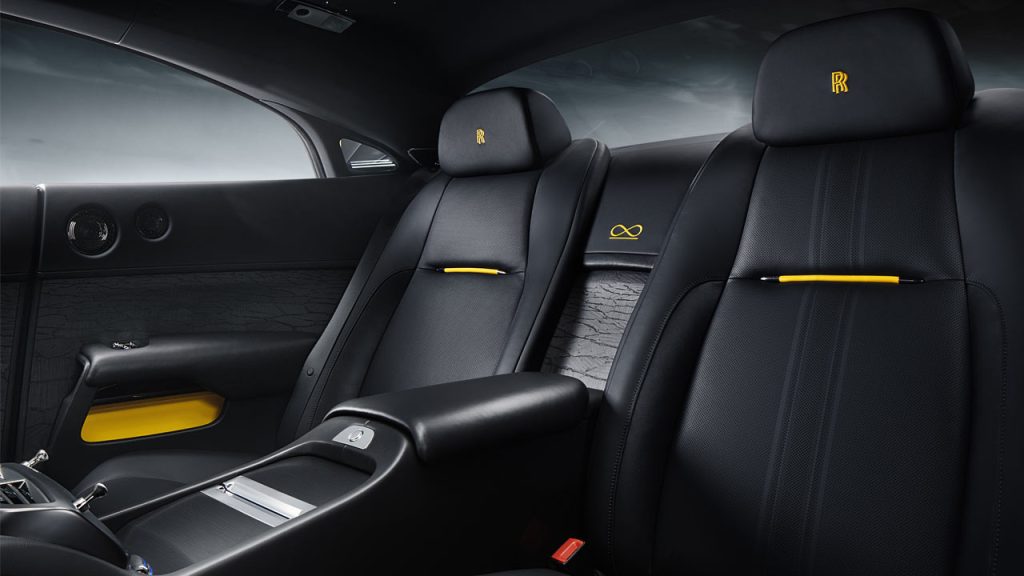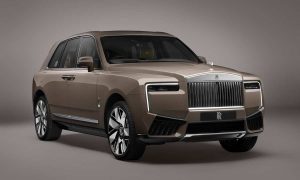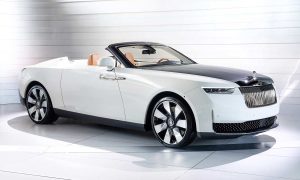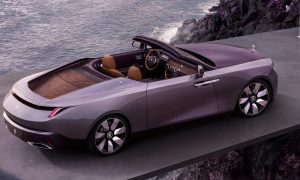The last V12 coupé Rolls-Royce will ever make as it inevitably joins the EV bandwagon.
That’s right; this is one of those goodbye editions we’ve been seeing lately from various brands. The latest one comes from Rolls-Royce, and it’s called the Black Badge Wraith Black Arrow—limited to 12 units worldwide—marking the end of production of the brand’s V12 powerplant.
As the name suggests, the Black Badge Wraith Black Arrow builds on the Wraith Black Badge. The exterior is painted in a gradient that transitions from Celebration Silver at the front to Black Diamond at the rear. And, the Black Diamond side has been finished with a glass-infused crystalline coat to enhance the transition between the two colors and achieve a motion blur effect from front to rear. Apparently, this technique results in a subtle texture inspired by the crusted surface of the Bonneville Salt Flats.
The gradient paint is finished with a high gloss lacquer—which is polished for more than 12 hours for a glass-like finish. The company also says that the development and testing of this paint finish took 18 months. Adding the necessary contrast to this “Fifty Shades of Grey” paint finish are Bright Yellow accents found on the front bumper, V-struts behind the grille, wheels, and of course, on the base of the car’s layered carbon fibre Spirit of Ecstasy.
On the inside, well, you see lots of Bright Yellow elements that grab your eyeballs from all the other details, but you cannot miss those V12 engine drawings engraved onto a single sheet of black-coated aluminium on the passenger side of the dashboard. And, the Black Arrow’s coach doors are lined with open-pore Black Wood, in a complex design comprising over 320 multi-directional and lasered marquetry pieces that mimics the cracked, irregular surface of the Bonneville Salt Flats. This feature also extends onto the rear ‘Waterfall’ panel—which separates the two rear seats.
For the upholstery, Rolls-Royce has used what it calls a new ‘Club’ leather—with its natural markings intentionally enhanced to give the interior more visible “life lines”. You can also notice a Thunderbolt speedform in the centre console; Thunderbolt was a British Land Speed Record holder of the 1930s—powered by twin Rolls-Royce V12 aero engines. Last but not the least, the Starlight headliner incorporates 2,117 fibre-optic stars, the greatest number ever seen in a Rolls-Royce car. The pattern depicts constellations as they would have appeared over the Salt Flats in Utah on 16 September 1938, the date of George Eyston’s final record.

Leave a Reply
Note: Comments that are unrelated to the post above get automatically filtered into the trash bin.
